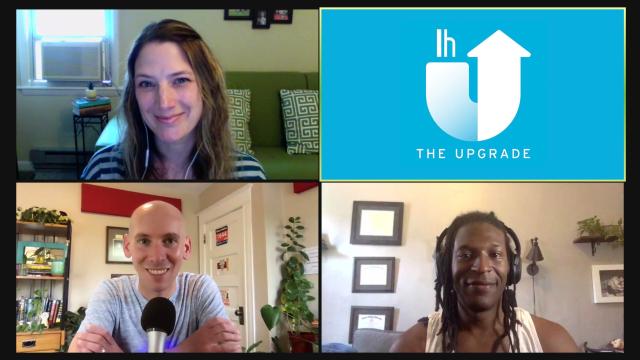This week we’re kicking our butts into gear and developing a solid running habit with help from Strength Running founder Jason Fitzgerald. And just in time too, because Lifehacker’s very own Meghan Walbert, co-host of The Upgrade, has been working on learning to enjoy the workout herself for this month’s Lifehacker Fitness Challenge.
In addition to being an experienced marathon racer, Jason is a USA Track & Field certified coach and host of The Strength Running Podcast. (He’s also a frequent Lifehacker contributor!)
Listen to hear Jason’s expert advice on how to get started as a beginning runner, how to make running less boring, and what we can do to improve our form and avoid injuries.
Listen to The Upgrade above or find us in all the usual places where podcasts are served, including Apple Podcasts, Google Play, Spotify, iHeartRadio, Stitcher, and NPR One.
Highlights from this week’s episode
From the Jason Fitzgerald interview
On the fast progress that comes with running habitually:
[E]ven after a couple of weeks, you’re going to start experiencing progress. You’re going to start getting better. The metrics that we track as runners are going to start improving for you. And what I always loved about running was that no matter what, if you put in the work, you’re going to get better…it’s up to you. You have that control over your own progress in the sport. And I just think that is so exciting.
On what to focus on when you’re first starting to run:
I think it’s helpful to always have a purpose for whatever run that you’re going to be doing. And for beginners, almost all their runs are just going to be easy runs. That is literally the definition of the type of run that they’re doing…And really, your easy runs are not really done at a given pace. They’re really at a given effort. Those are easy runs. Should be easy. And how do we define easy? I like to tell runners, if you are meeting the three C’s of easy running, then that run is probably an easy effort. So let’s make sure the run is conversational. So if we’re running together, we can have mostly a full conversation… the run should also be controlled. Now, sometimes when you get to be a more intermediate-advanced runner, you’re doing a hard workout. You don’t necessarily feel in control the whole time you’re riding that line…So let’s make sure our runs are in control and then our runs should also be comfortable. Do you feel comfortable now? This is a little bit trickier for beginners, because when you first start running, none of your runs might feel very comfortable. So it is something that’s going to take a couple of weeks.
On the injury-prevention benefits of making a “run sandwich”:
[A] really helpful strategy that I promote all the time is this concept called making a run sandwich. We always want to sandwich our run in between a dynamic warm-up beforehand to ensure that you’re actually ready to run. And then we’re going to finish our run at the very end with maybe ten to 20 minutes of mostly bodyweight strength exercises. And so this sandwich method is great for so many reasons: You’re going to be building coordination, athleticism, flexibility, mobility with the dynamic warm-up, it’s going to reduce your injury risk, you’re going to go running, you’re going to feel better, too, especially for new runners. You know, doing that dynamic warm-up beforehand really helps you go from sedentary, maybe at work you’re sitting down at your desk, to running. It serves as that bridge, that transition point. And then when we follow our run with a 10 to 20-minute core or strength routine, we’re doing a couple of things: Number one, we’re getting stronger. Number two, we’re helping ourselves cool down. We’re going through a bunch of different ranges of motion, and that’s really going to help us feel better for the rest of the day, because I think anybody who’s gone on a longer run or maybe they do a hard workout and you get back at home and you’re tired and you sit down in a chair and you get your phone, you get distracted for half an hour, and then you get up from that chair. You know how you feel. You feel tight. You feel like you’ve just aged 50 years. And that’s because at the end of a workout, we’ve got to kind of come down from the higher intensity of running. And that 10 to 20-minute bodyweight strength routine can act as that bridge between running and being more sedentary.
To hear more of Jason’s tips on how to run more efficiently and enjoyably, check out the full episode.
Have any feedback or ideas for us? Want to be featured on the show? Send a voice memo to [email protected]. Next week we’re talking about investing, so send us your questions or best advice on the topic!
Episode Transcript

Leave a Reply
You must be logged in to post a comment.